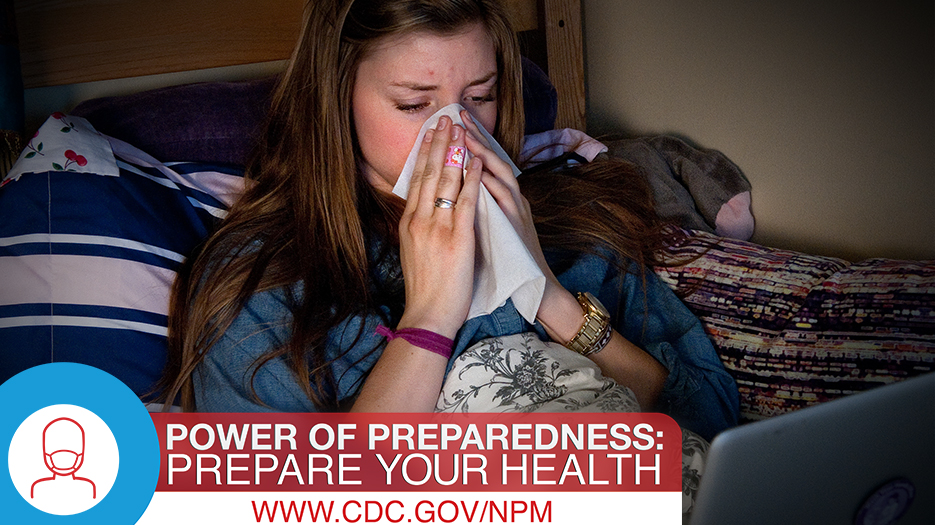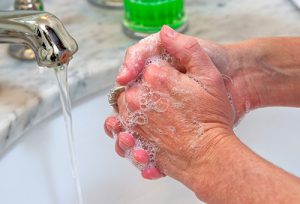Personal Protective Actions You Can Take in a Flu Pandemic
Posted on by
Every fall and winter the United States experiences epidemics of seasonal influenza (flu). Sometimes a flu pandemic occurs due to a new flu virus that spreads and causes illnesses around the world. We cannot predict when a flu pandemic will occur, but over the past 100 years, we have documented four flu pandemics resulting in close to 1 million deaths in the United States alone. 1
When a flu pandemic happens, it can take up to 6 months before a vaccine against a new flu virus is available. Antiviral drugs can help manage the symptoms of the flu, shorten the time you are sick by 1 or 2 days, and prevent serious flu complications, like pneumonia. But, there may be a limited supply of these medications during a pandemic so nonpharmaceutical interventions (or NPIs) may be the only prevention tools available during the early stages of a pandemic.
There are things you can do, apart from getting vaccinated and taking medications, to help slow the spread of a flu pandemic. NPIs, also known as “community mitigation measures,” are important because they will be the first line of defense in the absence of a pandemic vaccine. NPIs may be more effective when used early and in a layered approach (i.e., using more than one measure at a time). During the 1918 pandemic, cities that put NPIs in place quickly reported fewer deaths.2,3 NPIs may be used in different settings, including homes, schools, workplaces, and places where people gather (e.g., parks, theaters, and sports arenas).
Personal protective measures to prevent flu at all times
 CDC recommends using some NPIs to prevent seasonal flu and other respiratory infections. To help prevent the flu, you should always:
CDC recommends using some NPIs to prevent seasonal flu and other respiratory infections. To help prevent the flu, you should always:
- Stay home when sick and away from others as much as possible,
- Stay away from people who are sick as much as possible,
- Cover your coughs and sneezes with a tissue,
- Wash your hands often with soap and water,
- Avoid touching your eyes, nose, or mouth, and
- Regularly clean surfaces and objects that you use a lot.
Personal protective measures to prevent flu during a pandemic
Many of these NPIs would still be recommended during a pandemic, but some would be reserved for use during a flu pandemic. Depending on the severity of a pandemic, CDC might recommend:
- Stay home if exposed to a sick household member,
- Use a face mask when sick and out in crowded community settings, and
- Implement community measures to reduce exposure to pandemic flu (coordinating school closures, limiting face-to-face contact in workplaces, and postponing or canceling mass gatherings).
CDC is preparing for a flu pandemic
There is always a threat that a flu pandemic will arise, so CDC is taking steps to prepare. In 2017, CDC issued updated community mitigation guidelines to help state and local public health departments and their community partners make plans before the next pandemic happens. Visit www.cdc.gov/npi to access the updated guidelines; plain-language planning guides for the general public and community settings; and additional NPI communication, education, and training materials. You can find more information about seasonal and pandemic flu at www.cdc.gov/flu and at www.cdc.gov/flu/pandemic.
Footnotes:
1 Past Pandemics: https://www.cdc.gov/flu/pandemic-resources/basics/past-pandemics.html
2 Hatchett RJ, Mecher CE, Lipsitch M. Public health interventions and epidemic intensity during the 1918 influenza pandemic. Proc Natl Acad Sci U S A. 2007; 104:7582-7.
3 Markel H, Lipman HB, Navarro JA, et al. Nonpharmaceutical interventions implemented by US cities during the 1918–1919 influenza pandemic. JAMA. 2007; 298:644-54.
3 comments on “Personal Protective Actions You Can Take in a Flu Pandemic”
Comments listed below are posted by individuals not associated with CDC, unless otherwise stated. These comments do not represent the official views of CDC, and CDC does not guarantee that any information posted by individuals on this site is correct, and disclaims any liability for any loss or damage resulting from reliance on any such information. Read more about our comment policy ».
Working in the medical field i feel that 2017-2018 was one of the worst years I have seen yet being a nurse the last 4 years. This past spring and summer we were still seeing flu cases in May and June. As a health care worker I am not sure we can ever be 100% safe from illness such as the flu, and flu is a hard one to contain due to droplet transmission.
Education patients and family members seem to be a big deal when dealing with flu and containment of the virus. The patient needs to remain in as much isolation as possible until the incubation period is over. The family members need to be aware that they need to use masks for protection when interacting with the patient and washing hands and cleaning all materials after use to cut down on infection.
Some of my patients even swear by Vitamin C and say that using it daily can cut down and prevent cold and flu. Although nothing is every always effective in prevention, a lot of patients walk around sickly for days before realizing they have the flu and have exposed dozens of people. Therefore standard precautions and hand washings are the number one way of preventing the spread of infection.
As a Nurse, educating my patients on preventive measures is something that is done year-round. I try to stress the importance of handwashing, staying in away from germs, staying home when you are sick, and keeping children home when they are sick to aid in the prevention of spreading the flu. With so many people in the community in which we live, the flu tends to spread very rapidly. I think with the NPI measures that are mentioned, it is equally important for staff caring for those at high risk or in the medical field to get their flu shots to not only protect themselves, but their patients as well. I, as a nurse, would also recommend the use of a face mask out in public during these higher risk months due to the transmission and risk.
Prevention is better than cure. So stay safe everyone!